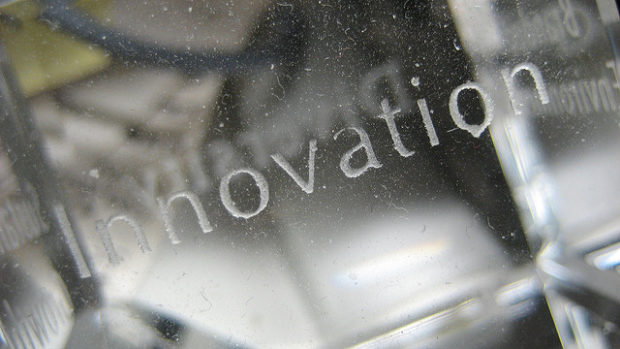Three Ways to Innovate Like an Olympian at the Office

The following is a guest post on innovation By Mario Moussa and Derek Newberry. Their bio follows
Media coverage of the 2016 Summer Olympics has featured awe-inspiring performances by top athletes like Simone Biles and Michael Phelps. It has also given credit to the many coaches and teammates who, laboring tirelessly behind the cameras, have helped these extraordinary individuals reach the pinnacle of their sports. But there is another story that should be getting as much attention – and, in practical terms, it has the most relevance to your daily exploits at the office. This story is about innovation.
Olympians, innovation, and you . . . really? Absolutely. Without innovation, Simone Biles would not be executing maneuvers that no other competitor, male or female, can even contemplate. And Michael Phelps would not have left Rio with a career 23 gold medals, a record of dominance that makes him the most decorated gold medalist in Olympic history. That’s ancient history, by the way, the previous record-holder — Leonides of Rhodes — having lived over 2000 years ago. Even if your athletic career involves nothing more than watching on the couch as the best of the best compete live from Rio, their successes suggest powerful ways to achieve creative break-throughs in your own performance.

By following a few Olympic-level innovation principles, you too can medal in the grueling workplace competitions:
1. Seek group support for your individual creativity.
“At this point, nobody beats Simone Biles,” observes Nastia Liukin, a 2008 Gold Medalist. Coach Aimee Boorman notes that Biles’ routines require less running and allow her to do more tumbling than other gymnasts. It is this innovative combination of roundoff, back handspring, double layout, half-turn, and landing that makes Biles the world’s best. Oh, and there is the Stag Sissone she adds after the landing – a jump that Boorman describes as a “simple skill” that “adds to bonus.” Simple, but no one else does it. Where most competitors won by fractions of a point, Biles won by one or two points. Such dominance has its roots in the training regimen developed by the U.S. women’s national team coordinator, Martha Karolyi. Earlier and less successful gymnastics “teams” were really just collections of individuals.
Karolyi manages to inspire both individual achievement and a strong commitment to the group. One reinforces the other. “We were expected to compete as a team overseas [but] you’re still an individual,” says Rhonda Faehn, senior vice president of the women’s team and a former gymnast. At a young age, Biles started honing her individual skills at Karolyi’s remote ranch, where athletes bunk and train together and spotty cell-phone service helps minimize intrusions that distract from developing relationships with teammates.
2. Build on the innovation that others have already discovered.
Michael Phelps embodies a unique blend of physical endowments, exquisite technique, and determination. Less obvious is the decades of innovation that prepared the way for his dominance. Take his mastery of the underwater dolphin kick that has so often propelled him to the medalists’ podium. Phelps has benefited from innovations that go back at least to David Armbruster, who from 1917 to 1958 coached the University of Iowa swim team.
According to the International Swimming Hall of Fame, Armbruster first saw a demonstration of the technique in 1911 and started encouraging his swimmers to use it in the 1930s instead of the traditional frog kick. Others played a role in the development of the dolphin kick, including the physicist Volney Wilson, who was a swimming enthusiast as well as a contributor to the WWII project that produced the first atomic bomb. More recently, a Johns Hopkins professor of Mechanical Engineering has taken an interest in analyzing the stroke and lends his technical support to the U.S. swim team. TV viewers only see the athletes striving for greatness for two intense weeks, but all of this history and behind-the-scenes activity is actually a bigger part of the story.
3. Dream, and then work like crazy.
Daniel James Brown, in his beautiful book, The Boys in the Boat: Nine Americans and Their Epic Quest for Gold at the 1936 Berlin Olympics, recounts a scene in which the University of Washington coach conceives of the audacious goal of defeating the top U.S. rowing teams and pulling all the way through to the 1936 Olympic Gold Medal in Munich. Unsurprisingly, years of all-consuming toil separated that inspiring reverie on the banks of Lake Washington and the historic moment the Americans became world champions under Hitler’s baleful gaze. But the excitement of victory often eclipses all of the effort that led to it. You should never forget that the effort turns dreams into reality. While many break-throughs begin with an idea, the ones that make a difference are realized through disciplined practice. Go ahead and dream, but then get down to work.
As we just watched the closing ceremonies of the Summer Olympics in Rio, give a little thought to three questions: Who are the teammates who can push you to find that next level of performance? What are the innovations that you can build on? How much work will it really take to turn your idea into results?
By acting on your answers, you can be the office Olympian who wins the workplace gold.
About Dr. Mario Moussa and Dr. Derek Newberry
They have authored “Committed Teams: Three Steps to Inspiring Passion and Performance.” Dr. Moussa teaches in the Executive Programs at Wharton School of Executive Education. Dr. Newberry is a lecturer at the Wharton School. Connect with Dr. Moussa at www.moussaconsulting.com, and with Dr. Newberry via Twitter, @derekonewberry.
Images: Innovation Olympian


